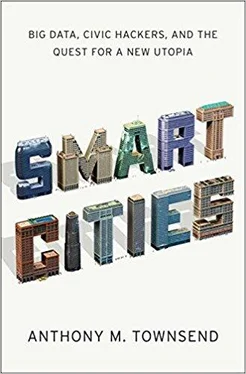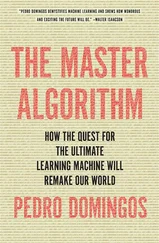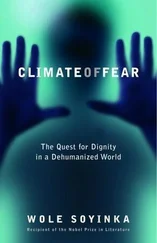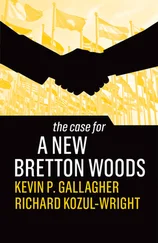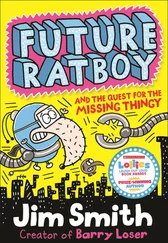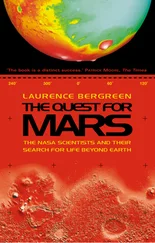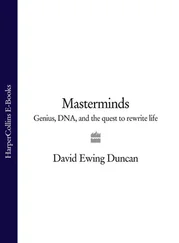IBM set its sights on government as a huge, untapped market and cities as a particularly high-growth segment. A third control revolution, building on the ones pioneered by Hollerith and SABRE before it, was in the making. But according to John Tolva, IBM’s leading evangelist for smart cities at the time, “There was a huge lack of subject matter expertise in cities in the company.” To get up to speed, in 2010 IBM tapped into its existing leadership-development program, the Corporate Service Corps, to create the Smarter Cities Challenge. A kind of consulting Peace Corps for smart cities, the program paired teams of pro bono consultants with cities across the world to design solutions that drew on IBM’s technology and expertise. A pilot round in 2010 that involved seven cities put IBM engineers on the ground in front of real urban problems. As Tolva explains, it was priceless knowledge. “There was no formal way to get that. It created a couple hundred people,” inside IBM, “who know what’s going on with cities.” Over the next three years the program promised to deliver 550 million in pro bono consulting services to one hundred cities around the world.
By 2011, this missionary strategy was paying off. In early June, lumping in Smarter Cities Challenge and a host of conventional paid engagements with city governments, IBM claimed a knowledge base that spanned over two thousand “Smarter Cities” projects. With these hastily minted credentials in place, the company launched its most ambitious urban solution to date, the “Intelligent Operations Center for Smarter Cities.” A kind of mission control center for mayors straight out of NASA, it was the culmination of Harrison’s vision of an instrumented approach to city management. Anne Altman, the general manager for IBM’s Global Public Sector, made the pitch. The system could “accurately gather, analyze and act on information about city systems and services.”
It was an all-seeing eye that “recognizes the behavior of the city as a whole.” At its heart was a prediction engine offering “deep insights into how each city system will react to a given situation.”
Once again, crisis had spurred the creation of a new technology for controlling the city. In April 2010 Rio de Janeiro experienced the worst flooding in its modern history. As a series of sudden, unanticipated rainstorms triggered mudslides, hundreds were killed and tens of thousands made homeless in the hillside slums rising above Rio’s tony center. The city’s inability to avert the disaster was an embarrassing failure for local officials. Six months earlier, just a few weeks after the city was selected to host the 2016 Summer Olympic Games, the world had watched the televised downing of a police helicopter, caught in the crossfire during a street battle between two rival drug gangs. Rio had suffered a half-century of decline since the government relocated to the newly built capital of Brasilia in 1960. Now, as it prepared to take the world stage, the sprawling city of 6.3 million people seemed more ungovernable than ever.
Mayor Eduardo Paes desperately needed to shake off Rios lackluster image by taming the city. Soon after the floods, he called in a team of IBM engineers led by Guru Banavar—himself a native of a fast-growing developing world megacity, India’s tech hub Bangalore. Paes asked IBM to design a disaster management system that would provide a heads-up view of what was happening in the city and speed the flow of information between different parts of government during a crisis. But he also wanted to prevent disasters in the first place. Could a computer predict the approach of future storms?
IBM already had the answer in Deep Thunder, a high-resolution weather forecasting system that could forecast precipitation up to forty-eight hours in advance. Coincidentally, Deep Thunder had grown out of an earlier collaboration between a team of engineers and meteorologists at IBM and the National Weather Service in 1996, to forecast weather for the Summer Olympic Games in Atlanta.30 In the intervening years, IBM had continued to improve the software’s accuracy. With a resolution of just one square kilometer, the company claimed Deep Thunder was over thirty times more precise than the state of the art at the time. “You can see what’s going to happen in the Olympic Village, for example,” Banavar boasted at a 2012 Columbia University lecture.
Enamored of the new system, Paes ordered construction of a brand-new building to house it in the neighborhood of Cidade Nova, just a few miles north of Copacabana Beach. The Rio Operations Center is a bunker fit for a president—its Sala de Controle (Control Room) houses seventy operators from thirty different city departments. A network of four hundred cameras placed throughout the city pump video to a bank of screens covering an entire wall; a government promotional film brags that it’s “the largest screen in Latin America.” There’s a crisis room linked to the mayor’s residence and the national civil defense authorities. The press are cordoned off behind glass in a fishbowl, presumably to be fed a well-spun trickle of news.
What began as a tool to predict rain and manage flood response morphed into a high-precision control panel for the entire city. As Paes boasts in the film, “the operations center allows us to have people looking into every corner of the city, 24 hours a day, 7 days a week.” Banavar explains that just a few months into the project, IBM and the city reenvisioned the whole endeavor as more than just a disaster management center. Rather, it would be a way to manage everything in the city—from big happenings like Carnival to everyday events such as concerts. A common operational planning protocol was developed, a preparation checklist that scripts and monitors all of the actions in the days ahead of an event across the gamut of city agencies. From what US Navy strategist Richard Norton described as a city at risk of becoming “feral” in 2003, Paes and IBM have used smart technology to render Rio one of the most meticulously managed on the planet, it seems. “As part of my job ... I encounter lots of different kinds of cities,” says Banavar. “I can’t say I’ve seen any other city that has this level of coordinated governance.”
In the spring of 2012, the world got a chance to see just what Rio and IBM had created—a remote-control city. Speaking at the TED (Technology, Entertainment, Design) conference in Long Beach, California, one of the Internet’s most visible platforms for big ideas and celebrities, a young, tan, and ebullient Paes played the increasingly prevalent role of nonideological, problem-solving mayor as well as ambassador for a resurgent Brazil’s global ambitions. His talk, brazenly titled “The 4 Commandments of Cities,” laid out his vision of how to run a city. For the climax, he turned to the screen and dialed up a videoconference with Carlos Roberto Osorio, his point man for urban affairs, back in Rio. For the next minute, Osorio flipped through a dizzying succession of live digital maps and debriefed the mayor on the day’s events (it was nearing midnight in Brazil as Paes spoke on the West Coast)—the GPS-tracked movements of the city’s garbage truck fleet, current precipitation picked up by the city’s brand-new Doppler radar, and Deep Thunder’s latest forecast (all clear). To cap off the show, Orsorio served up “a live transmission in downtown Rio for you, Mr. Mayor,” beamed from the dash-mounted camera of one of the city’s eight thousand buses. “You see, the streets are clear.”
Just how effective Rio’s Operations Center will be in taming the wild metropolis remains to be seen. Urban security experts with whom I have spoken are skeptical that it will have any significant impact on law enforcement, and technology experts point out that beyond the video streams there has been little investment in new sensor infrastructure to feed real-time data to the center. But as IBM has gotten its hands dirty in real cities, it has learned some valuable lessons about urban politics too. As Colin Harrison explained, after Palmisano’s 2008 speech, “Mayors, elected officials, governors ... people all over the world suddenly wanted to hear more” about
Читать дальше
